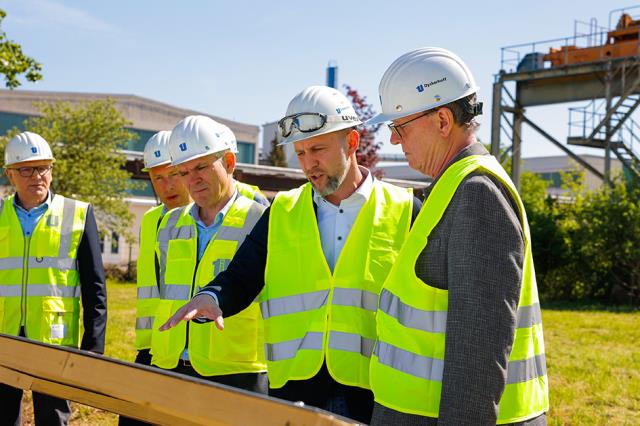During the visit of Thuringia's Prime Minister, Bodo Ramelow, at the Dyckerhoff's Deuna cement plant on 2 May, Dyckerhoff's Managing Director, Patrick Klein, announced that Dyckerhoff is planning to invest around EUR350m in the construction of a carbon capture installation at its Deuna plant in Thuringia. "Once the investment is completed, the Dyckerhoff plant in Deuna will be one of the first plants in Germany to produce and sell Net-Zero cement," said Klein.
"I am delighted that Deuna is also leading the way here. The carbon-neutrality of our industry is anything but trivial, especially in the cement production sector, as a significant reduction in CO2 cannot be achieved through alternative energies or fuels alone. Solutions for process-related emissions are needed here. The planned installation demonstrates the ambition and the will to continue setting standards in the cement industry," said Prime Minister Ramelow during his visit.

Deuna cement plant announces carbon capture project
Following the successful completion of two feasibility studies, detailed planning of the installation has already begun. Dyckerhoff (Buzzi SpA) is thus carrying out pioneering work on the way to decarbonising the cement industry. According to the current planning status, the carbon capture facility could start operation in 2029. The entire investment is subject to local regulatory approvals and the approval of the Dyckerhoff Supervisory Board. Applications for public funding are currently underway.
Prime Minister Ramelow visited the area earmarked for the construction of the CO2 capture installation on site, as well as the very efficient rail connection that already exists on the plant premises. This enables the net-zero cement to be transported to customers further afield and at the same time ensures the logistical framework conditions for the removal of the captured CO2.
The installation is designed to reduce the Deuna plant's CO2 emissions by around 620,000tpa, which means a reduction in the CO2 emissions in Thuringia from industry, commerce and energy conversion of more than 20 per cent.
